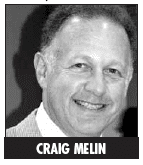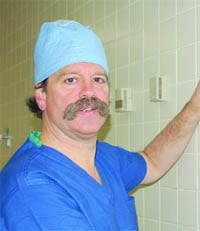A ’Decade Of Decline’ In Practice Physician Practice Environment Index Falls 3.6{06cf2b9696b159f874511d23dbc893eb1ac83014175ed30550cfff22781411e5} In 2003, Reaching An All-time Low
WALTHAM — The Mass. Medical Society (MMS) today released its Physician Practice Environment Index for 2003, and the analysis shows a still-deteriorating practice environment for medical doctors in the Bay State that has reached an all-time low since the first year of measurement in 1992.
The MMS Physician Practice Environment Index is a statistical indicator of selected factors that shape the overall environment in which physicians provide patient care in Massachusetts. That index is then compared with a similar figure for the entire nation. The Massachusetts index dropped 3.6{06cf2b9696b159f874511d23dbc893eb1ac83014175ed30550cfff22781411e5} for 2003, the 10th consecutive year it has fallen since 1993.
“How frustrating, that it just keeps dropping like a stone,” said Thomas E. Sullivan, M.D., president of the Massachusetts Medical Society, which represents more than 18,000 Massachusetts physicians and medical students. “And how ironic, that in a state known throughout the world for its quality of medical care, physicians in Massachusetts have faced a deteriorating practice environment for 10 straight years.
“On the plus side, it is a testament to the professionalism and perseverance of our physician colleagues that they continue to provide the quality of care they do in the face of such conditions,” he continued. “On the minus side, I fear we will lose more and more practicing physicians to other states, to early retirement, and to other careers. And that will certainly affect our patients’ access to care. We see it happening now.”
Sullivan said one of the best examples of the impact of this deteriorating environment is shown by the current shortage of neurosurgeons in the state. A medical society analysis of insured neurosurgeons in Massachusetts has found that the state has lost up to half of the physicians practicing this critical specialty just within the last five years.
Neurosurgeons treat and operate on patients who have brain tumors, spinal cord injuries, and trauma caused by injuries from such events as automobile crashes, severe accidents, and blows to the head. In many cases, they provide “on-call” coverage for emergency rooms and provide immediate treatment for life-threatening injuries.
Sullivan said low reimbursements for services, administrative overload, and increasing costs of doing business are affecting physicians of all specialties in all regions of the state. And on top of all that, medical liability insurance premiums, now the main driver of the decline in the index, continue their relentless rise across most medical specialties. Liability premiums jumped an average of 20{06cf2b9696b159f874511d23dbc893eb1ac83014175ed30550cfff22781411e5} in 2003 for Massachusetts physicians.
Two other factors dominated the 3.6{06cf2b9696b159f874511d23dbc893eb1ac83014175ed30550cfff22781411e5} decline for 2003: (1) the number of physicians 55 years of age or older increased 2.4{06cf2b9696b159f874511d23dbc893eb1ac83014175ed30550cfff22781411e5}, and (2) the ratio of physician income to housing costs rose 4{06cf2b9696b159f874511d23dbc893eb1ac83014175ed30550cfff22781411e5}, which indicates that housing costs are increasing faster than physician income, which rose just 1.4{06cf2b9696b159f874511d23dbc893eb1ac83014175ed30550cfff22781411e5}.
The US Physician Practice Environment also fell, at a rate of 4.1{06cf2b9696b159f874511d23dbc893eb1ac83014175ed30550cfff22781411e5}, for its eighth consecutive drop. It was only the second time in 11 years that the U.S. index dropped faster than the state index. The declines in both the Massachusetts and U.S. indices for 2003 were propelled by sharp jumps in averages of professional liability costs – the only double-digit jump on both the state (20 percent) and national (24{06cf2b9696b159f874511d23dbc893eb1ac83014175ed30550cfff22781411e5}) level of any of the factors that comprise the index.
Given the impact of liability premium rates, Sullivan said “Resolution of the liability issue will go a long way to improving the practice environment in Massachusetts.”
Economist James M. Howell, Ph.D., president of the Howell Group, which developed the index with the MMS, said this continued, rapid erosion in the physician practice environment is causing still more and bigger cracks in the health care system overall.
“The health care system is composed of many parts. But the system is badly bent, and in some cases, downright broken. We keep asking more and more of our physicians, and somehow, they deliver,” he said. “What is unknown at this point is how long they can continue to deliver before we have even bigger problems of physician supply and patient access to care than we have now.”
Howell said the greatest causes for concern are that the state has had 10 straight years of decline and that since 1999 the rate of decline continues to accelerate each year. The MMS developed the index to measure the impact of nine indicators representing three major factors that influence the practice environment for physicians:
- Supply of Physicians, including the number of applications to Massachusetts Medical Schools, the percentage of physicians over 55, and the number of employment ads in the New England Journal of Medicine;
- Practice Financial Conditions, including New England median physician income, ratio of housing prices to median physician income, and liability costs;
- Physicians Work Environment, including physician cost of maintaining a practice, mean hours per week spent in patient care, annual number of visits per emergency department.



Comments are closed.